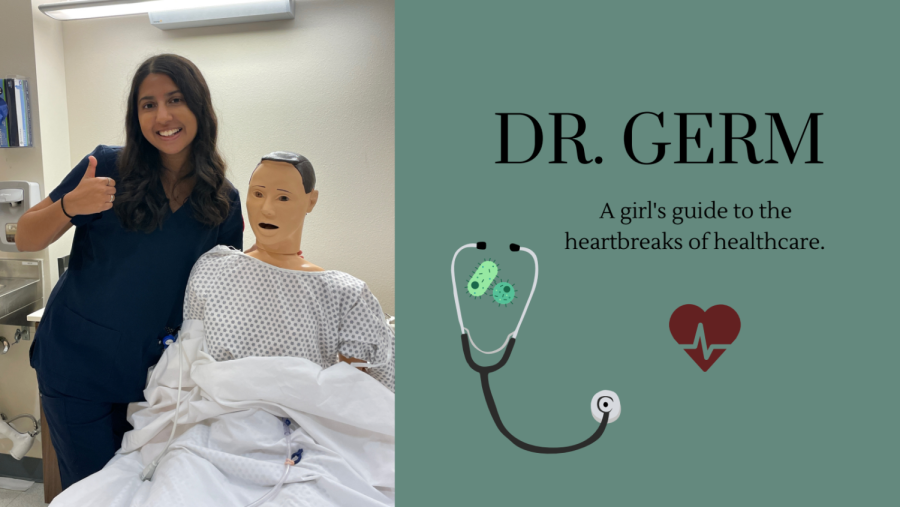In this weekly blog, staff reporter Shannon Christian writes about the myths of healthcare and how it impacts students.
Dr. Germ: speaking a new language
STAT. CC. BP.
After taking two years of Medical Terminology, I had felt properly prepared to enter clinical rotations and be able to speak the “language of medicine” with adequate proficiency. I had studied the abbreviations, made flashcards for the suffixes and prefixes, as well as memorized the endless root words relating to the human body. Communication within medicine however, goes beyond the jargon that is listed in textbooks and on certification exams.
Working with any patients, especially residents I have assisted in a long term care facility, means that medical jargon should not be leaving your mouth in the presence of the patient. Instead of this complex language that has been ingrained within the extensive training that medical professionals endure, most communication with the patient is spoken with the goal of being able to be properly received by the patient. This can range from phrases of comfort, to not specifically detailing their “weaknesses”, or just simply being a voice of support.
No longer was my focus to identify the right terminology, but rather to introduce myself before entering a room, to ask how the resident is doing, and to explain any procedure I was to help assist that day. I had the responsibility to ask consent for the steps in each procedure “can I ask you to lift your arm”, “is it okay if I remove your gown”, or even “would it be okay if I helped you with this?”, all centered around what the resident is comfortable with.
Even the choice of words is incredibly significant, such as saying “resident” instead of “patient”, as “patient” can indicate that the person in your care is sick, when really most of those in the care of the nursing home are there to be assisted with daily living, and not really to be treated for the illness. When working with injured residents however, such as those who have endured a stroke and have one side of their body paralyzed, or unable to have the same range of motion as the other, one would refer to that side as the “affected side” and not the “weak side” or “bad side”. The general rule of thumb in this new language to use with residents is that you do not want to be negative when there are other ways to approach communicating with a resident who already may feel dejected or melancholy.
One also must remember that the resident is in the right, and in attempts not to offend them, even when pushback is offered up, a care provider must simply adhere to the requests of the resident. This also has limits though, for example if a resident has been refusing showers, the care provider may allow them to miss one, but the next time they refuse, a care provider could say “well, it has been a while since your last shower, would’t it feel nice to take one today?”.
Medical training, such as in clinical programs and medical schools, has even required that Communication Skills Training (CST), or COMSKIL be a required course in which students learn how to effectively communicate with patients, preventing any barriers within a care provider’s relationship with the care-receiver.
Communication is an aspect of patient care that has been consistently emphasized throughout all of the medical courses I have participated in, and I have realized that a lot of proper communication arises from genuine interaction rather than medical knowledge. If you aren’t able to establish that trust and effectively communicate with a patient or resident, it can be difficult for both parties to express their sentiments for treatment in a way that the other can understand. A care provider must care first, serving as a source of support for a patient’s condition to improve, or to help a resident with their continuation of living.
